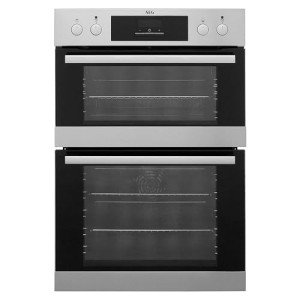25 Shocking Facts About Oven Built In

The Rise of Built-In Ovens: A Seamless Approach to Modern Cooking
In contemporary kitchens, where style visual appeals blend perfectly with functionality, one device stands apart as a real video game changer: the built-in oven. As property owners and chefs alike continue to look for ingenious options that boost their cooking experience, built-in ovens have actually ended up being significantly popular. This short article checks out the benefits, factors to consider, and patterns surrounding built-in ovens, highlighting why they are a vital function in modern cooking spaces.
What is a Built-In Oven?
A built-in oven is a kitchen home appliance designed to be integrated into the cabinetry of a kitchen area rather than standing alone. Unlike traditional freestanding ovens, which can be moved and positioned anywhere, built-in ovens been available in different designs and sizes to fit specifically within designated areas. Readily available in single or double setups, these ovens use a streamlined look that complements modern kitchen area designs.
Benefits of Built-In Ovens
1. Space-Saving Design
Among the most attractive benefits of built-in ovens is their space-saving style. By integrating the oven into cabinetry, you can release up valuable counter and flooring area. This is particularly beneficial in smaller sized cooking areas, where taking full advantage of space is important. Built-in ovens can be installed at eye level, making them more accessible and minimizing the need to flex down.
2. Visual Appeal

Built-in ovens contribute to a streamlined and cohesive kitchen area style. Available in different finishes-- such as stainless steel, black, white, and customized kitchen cabinetry-- they can blend seamlessly into the general design. This visual appeal boosts the cooking area's visual harmony and elevates the area, developing a modern and sophisticated atmosphere.
3. Enhanced Functionality
Numerous built-in ovens come equipped with advanced cooking technologies, such as convection cooking, steam ovens, and smart features. These improvements enable flexible cooking choices, making it easier to accomplish professional-level results in your home. Smart built-in ovens can even link to Wi-Fi, making it possible for users to manage the oven from another location, receive notifications, and gain access to a variety of cooking programs and recipes.
4. Enhanced Ventilation
Due to the fact that built-in ovens can be integrated with cooking area hoods and ventilation systems, they can help maintain better air quality and reduce cooking odors. This is particularly substantial for those who enjoy to cook with fragrant spices and components, as an effective ventilation system can keep the kitchen area comfortable and inviting.
5. Customization Options
Built-in ovens provide a large range of modification options to fit individual cooking designs and needs. From professional-grade appliances with several cooking modes to compact styles for smaller kitchen areas, property owners can choose the oven that fits their specific requirements. Many producers also provide customizable front panels, permitting you to match the oven's look to your kitchen cabinetry for a genuinely combined look.
Factors to consider When Choosing a Built-In Oven
While built-in ovens have lots of advantages, there are essential factors to consider to keep in mind before making a purchase:
1. Rate
Built-in ovens normally feature a higher cost tag than their freestanding equivalents due to their design and installation requirements. It's important to consider both the cost of the oven and any extra expenses related to cabinets modifications or setup.
2. Installation Requirements
Setting up a built-in oven frequently needs professional help, specifically if you require to modify existing cabinets. Ensure that you consider any costs associated with installation, including labor and potential cabinets adjustments.
3. Size and Dimensions
Before acquiring a built-in oven, measure the designated space accurately to ensure an appropriate fit. Built-in ovens been available in different sizes and setups, so selecting one that aligns with your requirements and cooking area design is essential.
4. Lifestyle and Usage
Consider your cooking practices and requires when picking a built-in oven. If you regularly host large events, a double oven might be more useful. On the other hand, if you have a compact kitchen, a single-wall oven might be sufficient.
Trends in Built-In Ovens
The kitchen device market is constantly progressing, and built-in ovens are not exempt from emerging trends. Some existing trends include:
Smart Technology Integration: With the rise of wise home technology, built-in ovens now often include connection choices. This allows users to monitor cooking progress and adjust settings by means of mobile apps.
Energy Efficiency: As sustainability becomes a concern, lots of producers are buying energy-efficient built-in ovens that lower energy usage while maintaining efficiency.
Multi-functional Designs: Built-in ovens now use functions such as air frying, slow cooking, and steaming, providing flexibility that meets a large range of cooking methods.
Conclusion
Built-in ovens undoubtedly represent a best blend of design, function, and convenience in today's kitchen areas. As more house owners go with this modern option, the focus shifts to developing a cooking area that is as aesthetically pleasing as it is useful. Whether you are developing a new home or renovating your cooking area, thinking about a built-in oven could elevate your culinary experience and transform your kitchen into an elegant and practical sanctuary. With an array of alternatives readily available and continuous innovations in innovation, built-in ovens remain a standout choice for both novice cooks and cooking lovers alike.
